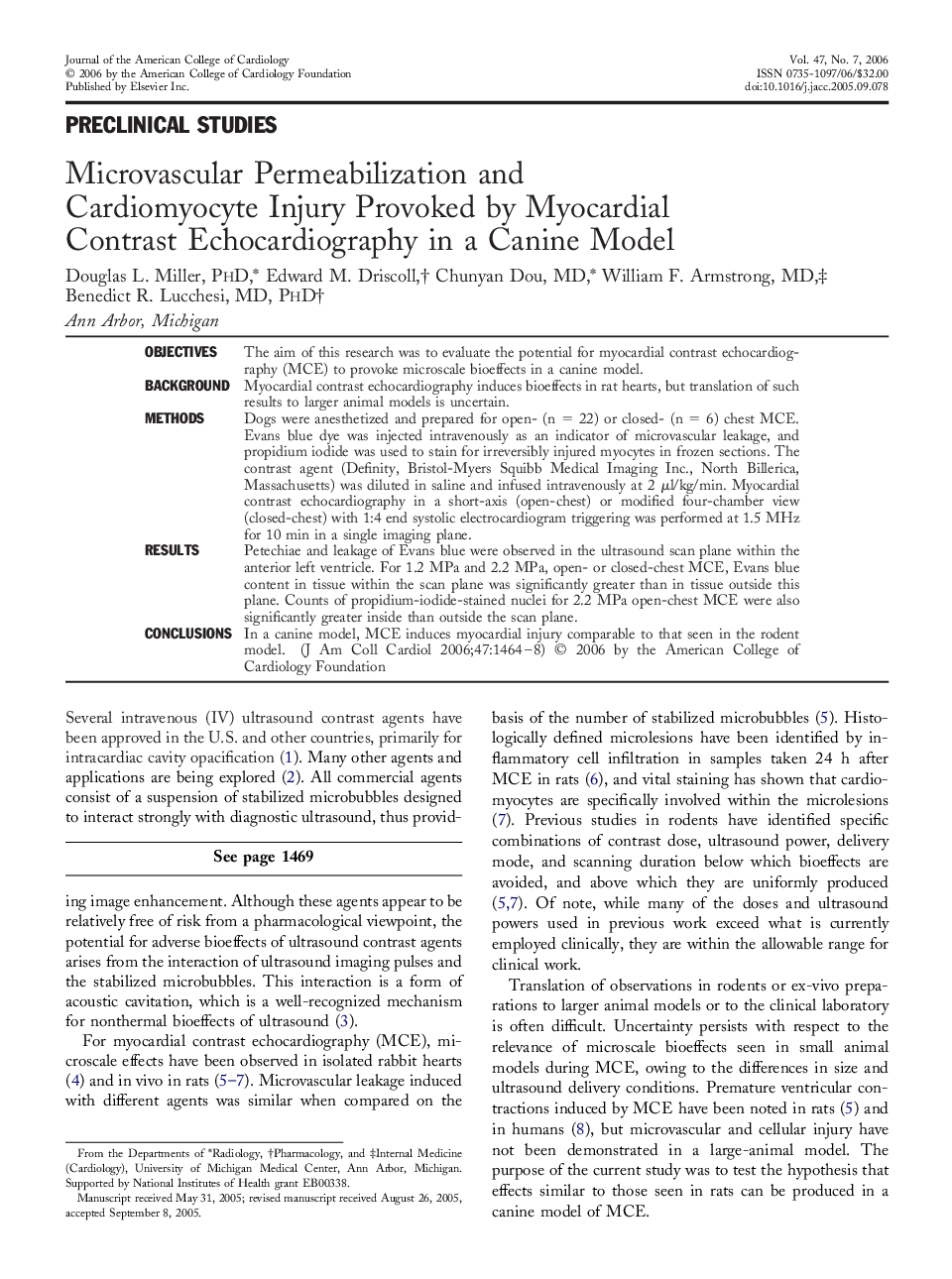| Article ID | Journal | Published Year | Pages | File Type |
|---|---|---|---|---|
| 2954122 | Journal of the American College of Cardiology | 2006 | 5 Pages |
ObjectivesThe aim of this research was to evaluate the potential for myocardial contrast echocardiography (MCE) to provoke microscale bioeffects in a canine model.BackgroundMyocardial contrast echocardiography induces bioeffects in rat hearts, but translation of such results to larger animal models is uncertain.MethodsDogs were anesthetized and prepared for open- (n = 22) or closed- (n = 6) chest MCE. Evans blue dye was injected intravenously as an indicator of microvascular leakage, and propidium iodide was used to stain for irreversibly injured myocytes in frozen sections. The contrast agent (Definity, Bristol-Myers Squibb Medical Imaging Inc., North Billerica, Massachusetts) was diluted in saline and infused intravenously at 2 μl/kg/min. Myocardial contrast echocardiography in a short-axis (open-chest) or modified four-chamber view (closed-chest) with 1:4 end systolic electrocardiogram triggering was performed at 1.5 MHz for 10 min in a single imaging plane.ResultsPetechiae and leakage of Evans blue were observed in the ultrasound scan plane within the anterior left ventricle. For 1.2 MPa and 2.2 MPa, open- or closed-chest MCE, Evans blue content in tissue within the scan plane was significantly greater than in tissue outside this plane. Counts of propidium-iodide-stained nuclei for 2.2 MPa open-chest MCE were also significantly greater inside than outside the scan plane.ConclusionsIn a canine model, MCE induces myocardial injury comparable to that seen in the rodent model.
